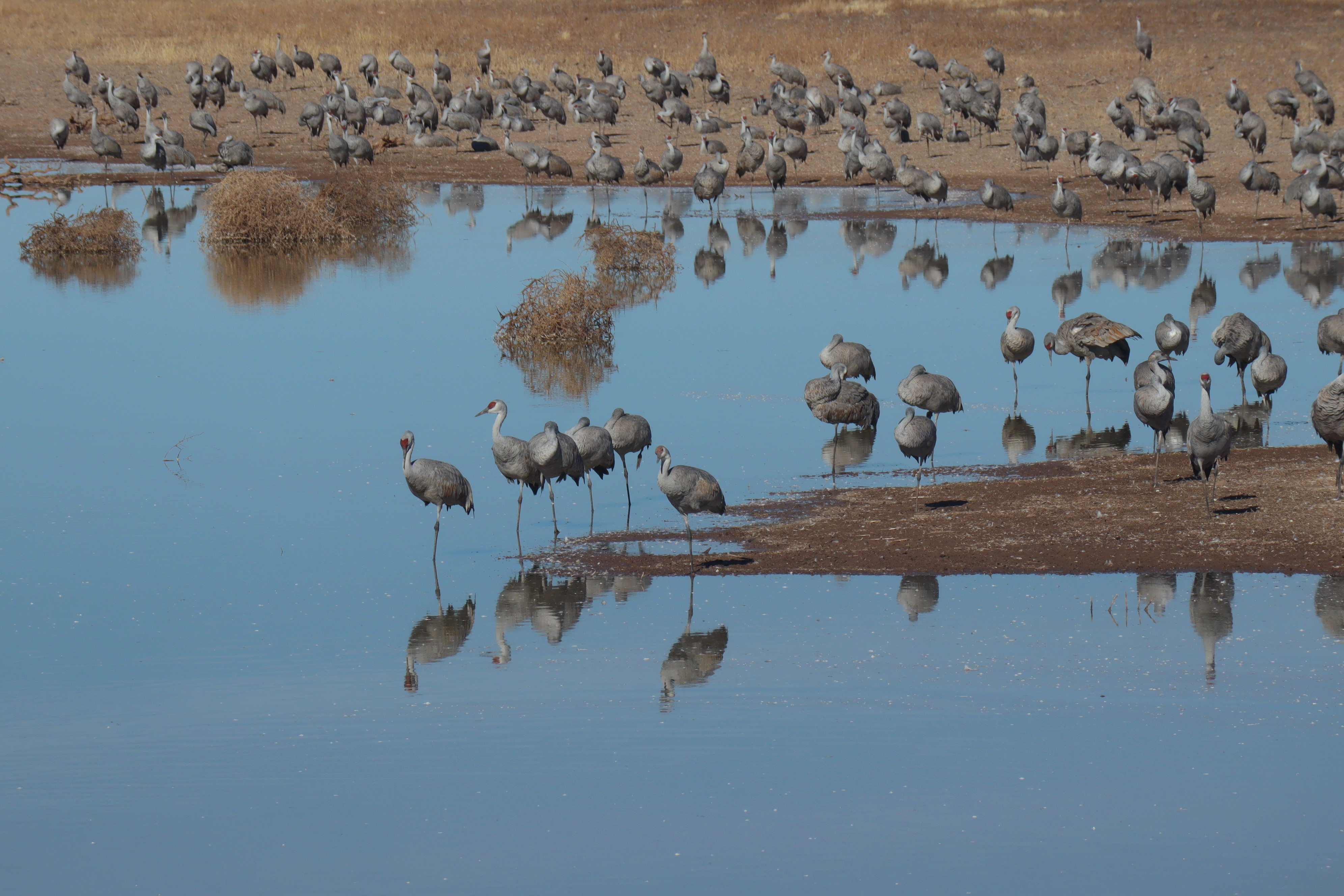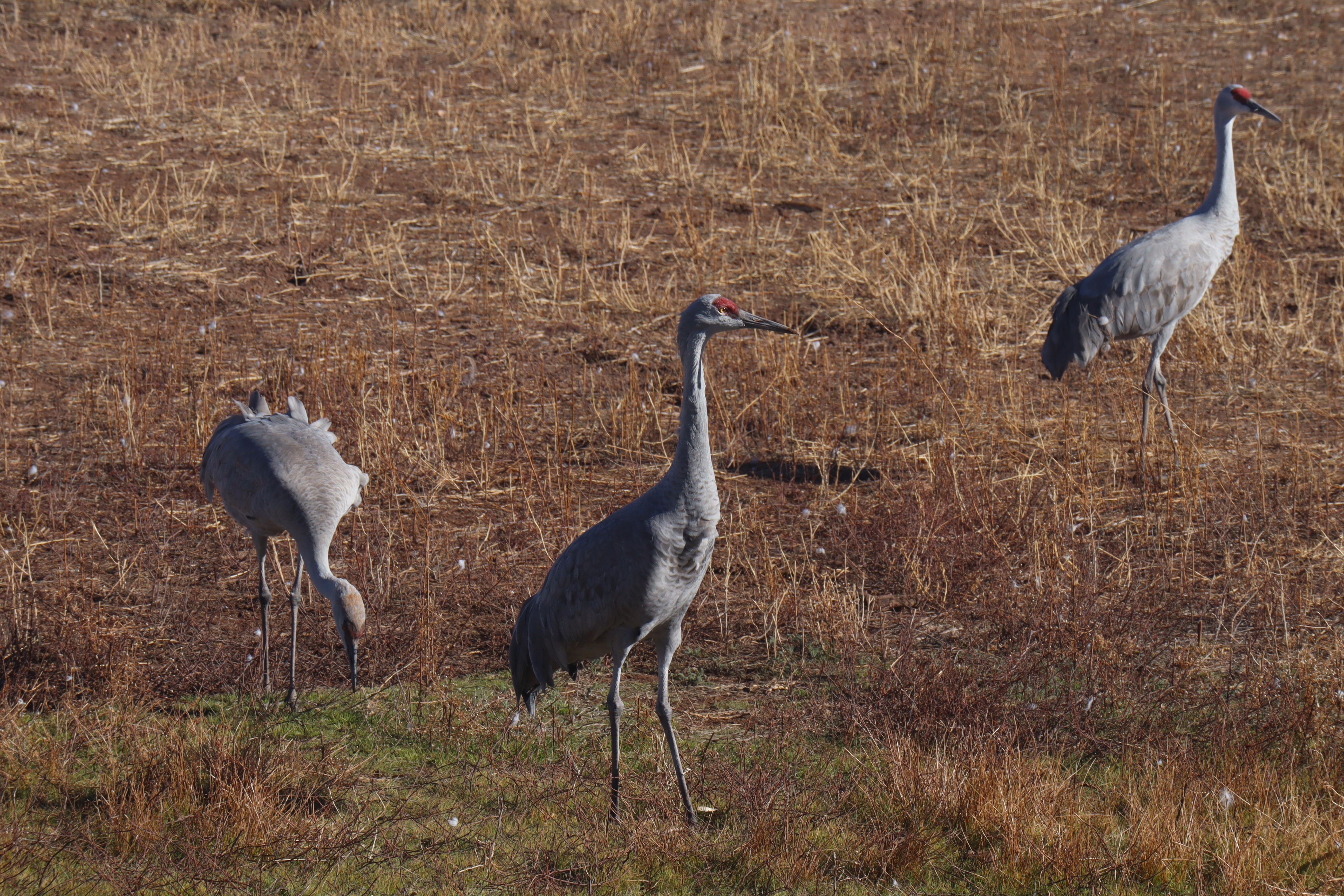 Sandhill cranes in Whitewater Draw in McNeal, AZ. January 18, 2024.
Sandhill cranes in Whitewater Draw in McNeal, AZ. January 18, 2024.
The Arizona Game and Fish Department reports that an estimated 42,200 migratory Sandhill cranes are in southeastern Arizona for the fourth year in a row, which is more than the previous five and 10 year averages.
Public Information Officer with the Arizona Game and Fish Department in Tucson Mark Hart said one theory why the Sandhill crane population is higher than the normal mid-to upper 30,000 average is that the offspring of the cranes are surviving longer.
“Sandhill cranes usually lay about two-to-three eggs," Hart said. "But only one typically survives. So, the survival rate among those that are born may be higher. And that’s really a function of conditions on the ground in places like Wyoming, Montana and Idaho — and for some, Alaska and Canada.”
He said southeast Arizona sees two types of Sandhill cranes, the Greater Sandhill Cranes and Lesser Sandhill Cranes.
"Greater Sandhill Cranes use something called the Rocky Mountain Flyway, and summer in Wyoming, Idaho and Montana," he said. "Lesser Sandhill Cranes, which we get more of, use the Mid-Continent Flyway to places like Canada and Alaska — and sometimes beyond even to Siberia."
 Sandhill cranes in Whitewater Draw in McNeal, AZ. January 18, 2024.
Sandhill cranes in Whitewater Draw in McNeal, AZ. January 18, 2024.
Another theory the Arizona Game and Fish department has about the consistently higher crane population is variance in the amount of water available on the landscape and how that may be affecting where the cranes chose to roost.
"There’s a wildlife refuge in New Mexico called Bosque del Apache," Hart said. "It’s a favorite winter roost for Sandhill cranes. But it has been dryer than average in recent years. So, some cranes that usually roost there may be turning up here.”
Hart said in the southeast Arizona region, usually the best area to see the cranes is Whitewater Draw in McNeal.
"The numbers are a little off this year. We could have as many as 30,000 in there," he said. "We’ve got closer to 13,000 … The water is lower in the Draw than in past years. So, there’s less places for them to roost. They stand in water overnight to evade Coyotes — which won't go in the water to get them. That's why they stand like that all night."
Hart said the lower number of cranes at Whitewater Draw was offset by more cranes using the Willcox Playa, where the department estimates there are about 24,000 birds.

By submitting your comments, you hereby give AZPM the right to post your comments and potentially use them in any other form of media operated by this institution.